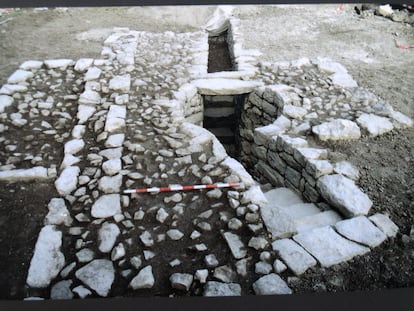Discovering Talaiotic Menorca
The 1,600 prehistoric sites of the Balearic island have been a UNESCO World Heritage Site since 2023. Here is a guide of the best ones to visit
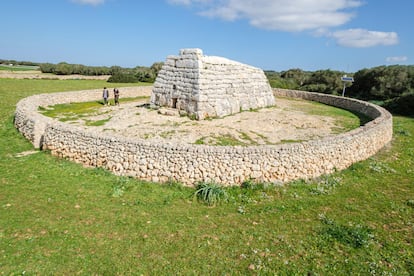
Menorca in Spain’s Balearic Islands is much more than a beach destination or a top spot for gastronomy and bio-sustainable tourism. The Spanish island is also one of the most important archaeological sites in the world thanks to its unique prehistoric constructions. This was certified by UNESCO in September 2023, when it included Talayotic Menorca on the World Heritage List. Indeed, archaeological sites on Menorca — testimony to the island’s occupation by prehistoric communities — continue to be studied by the field’s leading researchers.
Structures dating from the Bronze Age (1600 BC) and the Iron Age (123 BC) show the evolution of Cyclopean masonry. This refers to medium-sized stones fitted together without the aid of mortar. The history of the island cannot be understood without understanding the importance of stone. In fact, it is the relationship with this element that shapes the history of the Balearic Islands.
“The Talayotic people made very good slingshots, as remains have been found that attest to this,” says archaeologist Margarita Orfila Pons. “The chroniclers of the time referred to the fame of the Mediterranean and Rhodes slingshot slingers, who stood out above all the armies. The Carthaginian army, in particular, always recruited people from the Balearic Islands. They trained from a young age and could throw as far as three football fields.”
In fact, “ba’lé yaroh” in Punic means “to throw.” Thus, the origin of the name Baleares translates to “the masters of throwing.” Ancient historians such as Pliny the Elder or Diodorus Siculus referred to them countless times in their chronicles.
In total, Menorca is home to 1,600 prehistoric sites including talayots (a Bronze Age megalith), navetas (a megalithic chamber tomb), taulas (a Stonehenge-esque stone monument) and tombs. Of all these sites, the talayots best represent the island’s prehistoric culture. But what does this enigmatic construction consist of? talayots are circular, dry stone buildings that can reach 10 meters in height. Their function is still not very clear. Some archaeologists believe that were used for defense, and later, when this was no longer necessary, for burials.
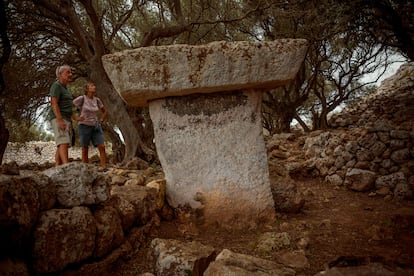
Of the 1,600 prehistoric sites in Menorca, archaeologist Carbonell recommends visiting the following spots:
Torralba d’en Salort
Torralba d’en Salort is made up of two talayots, a taula, a unique hypostyle hall, several prehistoric houses, a Cyclopean wall, silos and hypogea, underground tombs. Astronomer Juan Antonio Belmonte Avilés highlights the connection with Egypt through the sky. “It must be noted that Sirius, the brightest star towards which the taula of Torralba is oriented, was a major seasonal landmark in Egypt, where it was also an avatar of the goddess Isis. The discovery of Egyptian pieces in the excavations is suggestive, but we cannot go much further,” he concludes.
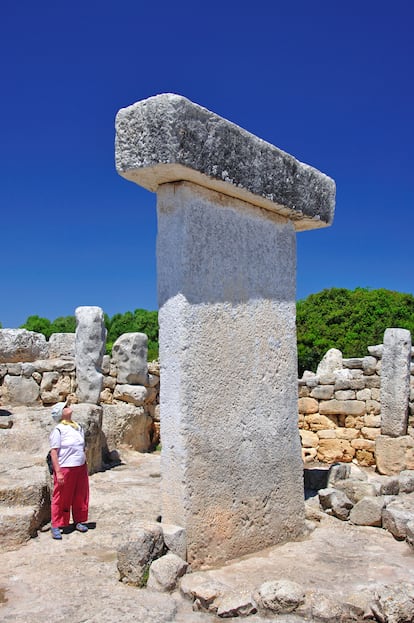
Galmés Tower
Torre d’en Galmés is one of the most complete structures on the island and the largest settlement in Menorca (66,240 square meters). Talayots dot the site, and there is a taula facing the sea and the Southern Cross. Nearby is a dolmen that evokes past migrations: Ses Roques Llises. Its privileged location, on top of a hill, made it an ideal place to maintain territorial control of a good part of the southern coast of Menorca.
Naveta des Tudons
The site owes its name to its inverted ship shape. This type of construction — a naveta — is the best preserved in Menorca and one of its archaeological icons. In the 1960s, hundreds of skeletons were discovered buried with their personal belongings and trinkets using curious rituals, which has made the Naveta des Tudons the most famous funerary monument on the island.
Talayotic settlement of Trepucó
Very close to the city of Mahón is the Talayotic settlement of Trepucó, one of the most majestic settlements in Menorca, with a talayot and a large taula. It was used until medieval times, and the buildings were adapted to Roman fashions. It is one of the sites that was excavated around 1930 by Margaret Murray, a British archaeologist and pioneer of scientific research into the prehistory of Menorca.
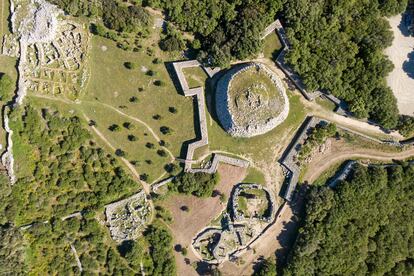
Calescoves
Calescoves is a prehistoric necropolis in a picturesque natural setting, with around 90 caves are dug into the rock of the cliff walls and the coast. Used as an anchorage (especially between the 4th century BC and the 6th century AD), it is essential for understanding the world of the dead. It was also a place of pilgrimage.
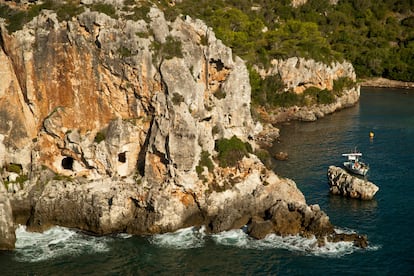
Son Catlar
This is a Talayotic settlement delimited by an imposing defensive wall, to the west of the island.
Centaurs and strange phenomena
“Astronomical orientations and visual interconnections between prehistoric structures indicate networks with possible cosmological meanings.” That’s according to UNESCO’s description of Menorca’s archaeological heritage. Astrophysicist Michael Kosher has been fundamental in understanding this connection, as he believes that these enclosures are strongly related to Osiris and the Centaurus constellation. Prehistoric people believed that it was centaurs that began to evolve, to think and to identify plants that helped with certain ailments. One of these centaurs was called Chiron.
In prehistoric times, the sky was observed and known a lot was known about it, which is somewhat mysterious since the stars change their position over the years. Today, in order to study the past, astrophysicists have to go back to that time. A milestone of the Talayotic period that can still be observed is the site of So Na Caçana, which played host to a special archeo-astronomical event: the celebration of the winter solstice, which marked the end of the wheat sowing period on the island. During the shortest days of the year, the sun’s rays illuminated the area in front of the pillar on which the deities were placed.

“The phenomenon is now perfectly observable,” says archaeologist Irene Riudavets. “We observed it during the winter solstice of 2020, when this part of the building was covered with opaque plastic, recreating the roof that the building would have had originally, in order to create the necessary darkness. The ray of light became very clearly visible.”
The hotel with a Talayotic menu
To celebrate Menorca’s UNESCO listing, the Cristine Bedford hotel, together with chef Pau Sintes, created a very original Talayotic menu (on request) that pays homage to the first people on the island. He is only 24 years old, but Sintes can already boast of having been crowned the Best Young Chef in Europe 2022.

You can try a starter called “Tiro con honda” (Slingshot), which consists of a stone-shaped cheese fritter with capers from the island. This first course, cooked using a primitive fire technique, is followed by “Ancestral Roast Lamb.” And for dessert, there is “Apple Dry Wall,” a tribute to the Menorcan masonry style.
It is clear that the archaeological sites, rising majestically from every corner of Menorca, have inspires all disciplines, including gastronomy.
Sign up for our weekly newsletter to get more English-language news coverage from EL PAÍS USA Edition
Tu suscripción se está usando en otro dispositivo
¿Quieres añadir otro usuario a tu suscripción?
Si continúas leyendo en este dispositivo, no se podrá leer en el otro.
FlechaTu suscripción se está usando en otro dispositivo y solo puedes acceder a EL PAÍS desde un dispositivo a la vez.
Si quieres compartir tu cuenta, cambia tu suscripción a la modalidad Premium, así podrás añadir otro usuario. Cada uno accederá con su propia cuenta de email, lo que os permitirá personalizar vuestra experiencia en EL PAÍS.
¿Tienes una suscripción de empresa? Accede aquí para contratar más cuentas.
En el caso de no saber quién está usando tu cuenta, te recomendamos cambiar tu contraseña aquí.
Si decides continuar compartiendo tu cuenta, este mensaje se mostrará en tu dispositivo y en el de la otra persona que está usando tu cuenta de forma indefinida, afectando a tu experiencia de lectura. Puedes consultar aquí los términos y condiciones de la suscripción digital.
